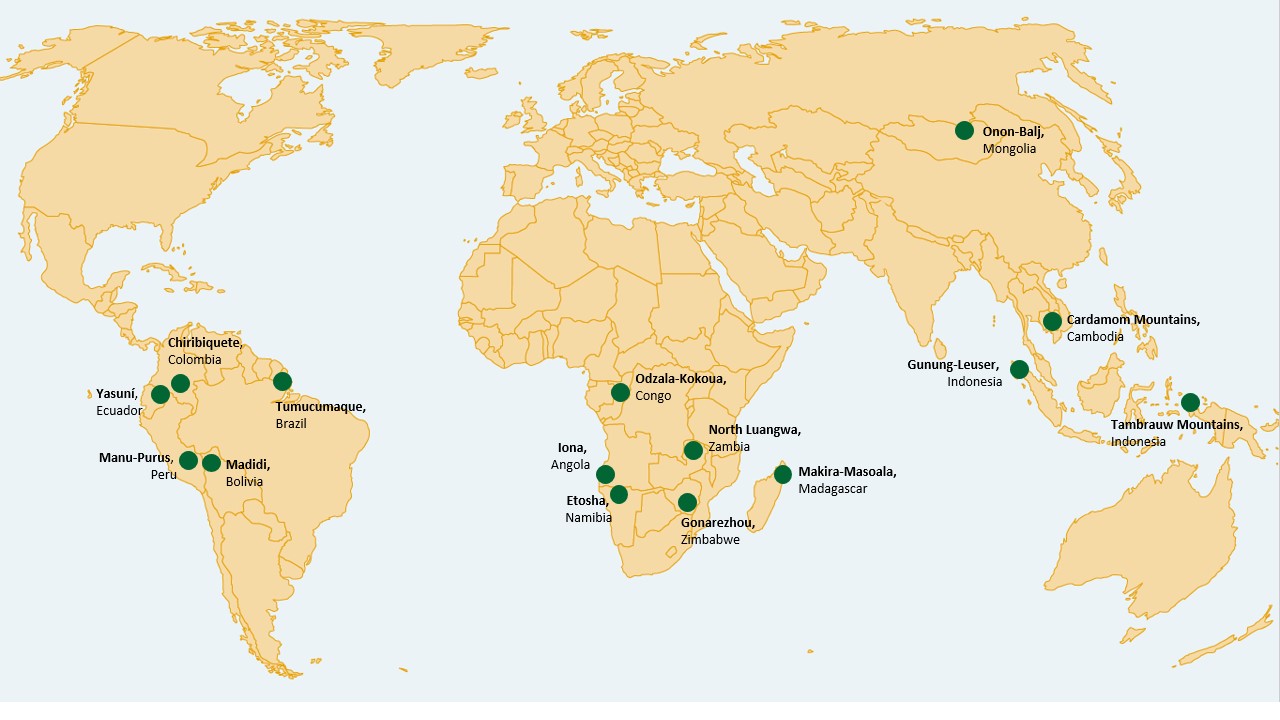Black lechwe in Bangweulu Wetlands National Park, Zambia
Copyright© Stephen Cunliffe
Natural heritage fund Long-term protection for natural landscapes – the Legacy Landscapes Fund
Intact ecosystems are vital to a stable climate, human well-being and the global economy. Yet the loss of biodiversity and habitats has accelerated dramatically over the last few decades.
Without large-scale natural landscapes, climate change would advance even more quickly – with impacts that would also be felt in Germany. This means that the conservation of these ecosystems is in the interest of Germany, Europe, and the entire world. However, many countries lack the financial resources for nature conservation. At the same time, they are home to many population groups – often Indigenous Peoples – whose vital economic and cultural resources are particularly threatened by biodiversity loss.
The Legacy Landscapes Fund (External link) (LLF) seeks to address this challenge by providing long-term core financing for outstanding natural landscapes.
How does the LLF work?
The Fund is intended to provide long-term funding for 30 landscapes by 2030. The public funding used for this purpose serves to mobilise additional private contributions.
Three features characterise the LLF:
- Long-term support for ecologically particularly valuable areas. Every protected area that is supported receives one million US dollars a year for a minimum of 15 years, with the ambition to make this “everlasting” funding.
- Combination of public and private funds. In every protected area, at least one third of the costs is covered by private partners.
- Support for partnerships between experienced nature conservation organisations, government authorities and local and/or Indigenous communities
The LLF is an independent foundation under German law. In addition to the Federal Ministry for Economic Cooperation and Development (BMZ), supporters so far include France, Norway, and several philanthropic foundations and enterprises.
Requiring and encouraging compliance with environmental and social standards
One important element of the Fund is its environmental and social standards system. It is meant to ensure compliance with international guidelines on human rights due diligence obligations.
Often, the areas supported by the LLF are located in remote and sometimes fragile regions where conflicts over differing interests have given rise to violence. That is why the LLF has created a comprehensive environmental and social management system to foster and monitor local compliance with national legislation, international obligations and internationally accepted standards.
A recent report by the United Nations High Commissioner for Human Rights noted that the Fund's environmental and social management system was exemplary.
Natural landscapes supported by the Legacy Landscapes Fund
Map of the 15 Natural landscapes supported by the Legacy Landscapes Fund
The Legacy Landscapes Fund currently supports 15 sites (as at September 2024) and is constantly growing. Support is being provided to natural landscapes, that is protected areas and adjacent lands.
More information can be found here (External link).
As at: 09/09/2024


